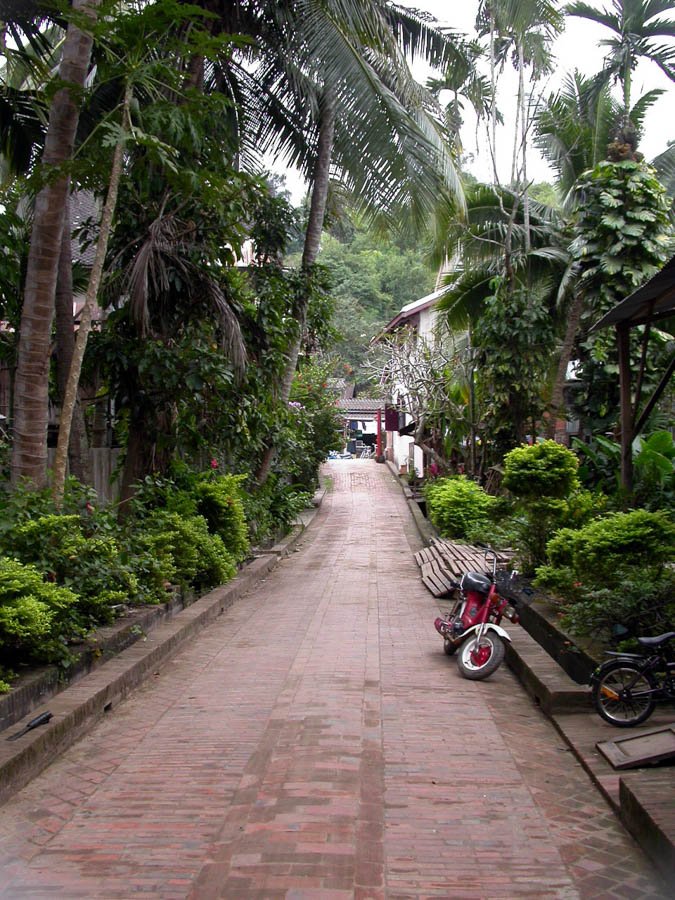Otherwise known simply as Wat Mai, this is a fairly large temple complex. The main temple is unusual in that it has a five-tiered roof. Each tier is finished with a naga finial and the very top tier is decorated with a 3-spire dok so faa, or metal roof decoration. The lowest roof sweeps nearly to the ground, which makes the roof structure the most prominent exterior feature of this wat.
To say that is not to diminish the extraordinary artwork of Pae Ton who, in the 1960s, created the golden bas-reliefs around the front entrance of the sim. I took quite a few close-up pictures, the detail is fantastic. One of the stories depicted, according to Denise Heywood in Ancient Luang Prabang is the Vissantara Jataka, the story of the last reincarnation of the historical Buddha. These bas reliefs also depict images of an idyllic daily life with the bottom filled with images of farm animals including water buffalo and pigs.
This is an active wat. When we arrived there was a very friendly young monk selling postcards on the veranda and many others lounging about on the grounds. The interior is filled with numerous Buddhist statues and long-boat paraphernalia. One of the buildings houses the two longboats used for the religious boat races during Lao New Year. I would love to return for Lao New Year one day to see this and other ceremonies passed down over the centuries. The Pra Bang Buddha is also brought from the Royal Palace to this temple during the Lao New Year celebration for its annual three day ritual ablutions, a religious term meaning washings.
The small chapels and stupa close to the entrance look as though they may have been left as is when this wat was renovated in the 1940s and 1960s. It gives us a flavor for the age of this temple complex, built in 1804.
